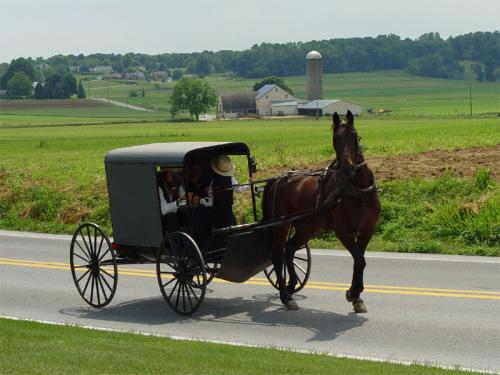 Radically humble, oriented towards group consensus rather than individual choice, the Amish are a challenge for the reporters who write about them.
Over the years, newspapers in areas that abut or are heavily populated by the Amish, like Lancaster, or the Delaware Valley, have developed ways of covering stories that respect the culture of this deeply private Christian group.
Radically humble, oriented towards group consensus rather than individual choice, the Amish are a challenge for the reporters who write about them.
Over the years, newspapers in areas that abut or are heavily populated by the Amish, like Lancaster, or the Delaware Valley, have developed ways of covering stories that respect the culture of this deeply private Christian group.
A conversation with an Amish individual is an opportunity to ask some questions, sensitively phrased, that will illuminate the subject at hand.
Thus it's a bit odd to stumble across a story in which the AP reporter apparently had a chance to ask a few direct questions about a compelling and persistent sidebar in American's ongoing church and state debate.
What happens when group members move into a new community and their beliefs clash with local laws? The topic in this case is the conflict that erupts when Amish don't follow local building codes.
Instead, most of his article is fueled by quotes from lawyers, municipal officials, and Amish advocates.
The article starts promisingly --
Daniel Borntreger's home looks like hundreds of other Wisconsin farmhouses: two-story A-frame, porch, clothes on the line.
But his home could cost him thousands of dollars in fines because the Amish farmer built the house himself, by Amish tradition but without a building permit.
His case is among at least 18 legal actions brought against Amish residents in Wisconsin and New York in the last year and a half for building without proper permits, according to court records, attorneys and advocates for the Amish.
The cases have sparked debates about where religion ends and government begins. Amish advocates - Amish won't defend themselves - argue that the Amish belief that they must live apart from the world trumps regulations.
"The permit itself might not be so bad, but to change your lifestyle to have to get one, that's against our convictions," Borntreger said as he sat in his kitchen with his wife, Ruth.
Here's what a journalist might have asked at this point. What is it about your convictions that is being violated by following local building ordinances and getting permits?
I'm not sure if the writer assumes that we know why Amish don't comply with some civil laws, or that he didn't get a chance to ask more questions.
A bit further into the article, the writer paraphrases a local municipal authority to illuminate the status of the Lancaster County Amish with regard to building codes.
In Pennsylvania, home to a large Amish population, liberal-leaning congregations have lobbied successfully for exemptions in the state building code, including permission to forgo electricity and quality-graded lumber, said Frank Howe, chairman of the board of supervisors in Leacock Township in Lancaster County.
What on earth does "liberal-leaning" mean when applied to the Amish? Or Howe talking about the Amish at all?
The writer does give us an interesting factoid: the number of Amish in the U.S. has doubled over the past 15 years.
In other words, these conflicts aren't going away anytime soon, and probably reporters won't stop writing about them.
As University of Michigan Professor Douglas Laycock suggests at the end of the article, the Amish can make a potent argument that they are entitled in the United States to continue to practice their religion freely.
Being Amish, of course, they must rely on "English" legal advocates and friends to do this for them.
But a few more quotes revealing the convictions at the "heart" of this story would have gone a long way to making it more than the clatter of discordant voices.
Picture of Amish buggy is from Wikimedia Commons
